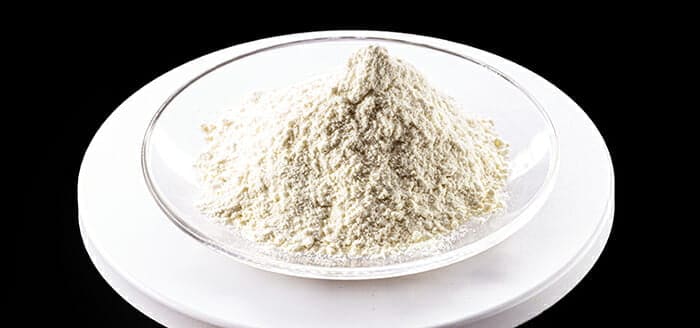What is trisodium phosphate?
Trisodium phosphate (Also known as TSP Cleaner) is an inorganic compound. Inorganic means that it does not consist of living matter. It being a compound means that it is made up of a combination of substances. Phosphates are derived from phosphoric acid, and they can be found in nature. The chemical formula of trisodium phosphate is NA3PO4.
Trisodium phosphate is created by neutralizing phosphoric acid through the application of sodium carbonate. This results in disodium hydrogen phosphate. Sodium hydroxide is then applied and the end result is trisodium phosphate and water. The water is evaporated off and you are left with the odorless powder that is how trisodium phosphate is often marketed as.
How does it work?
When it comes to putting trisodium phosphate to use, it is most often found in base mixtures starting off at 75% – 80% trisodium phosphate and 20% – 25% sodium carbonate. In order to use it, it needs to be mixed with hot water. What strength cleaner is required will vary how much water it needs to be mixed with.
Pros
Inexpensive – Unlike some specialized cleaning products of a similar caliber, TSP is relatively affordable. For example, 1kg averages around $5.66 – $8.48. Whether you are a painting professional who plans on making regular purchases or someone looking to add something to your DIY cabinet for infrequent use, you are bound to find that it offers great value for money.
Readily available – There is something of a caveat though. It is available in quite a wide number of places BUT there are some states where it has been outright banned. So folks in states where it is banned will need to look for an alternative. For those who live where it is still available, it is not particularly limited.
Can be mixed as needed – Whether you need something thick and powerful or thinner to just polish off an already relatively clean surface, TSP can be adjusted according to what you need it to do. This is a lot better than other cleaning fluids where there is often one standard thickness.
Long shelf-life – So long as it is kept dark and dry, TSP can be stored for an extended period of time. As always, however, it is worth regularly checking it to make sure that the product is stored appropriately. The date when it expires should also be made a note. Lasting for a long time is not lasting forever!
Versatile – Whether it is stripping pain from a fence outside or getting rid of mildew prior to spray painting your kitchen cabinets, TSP has a wide range of applications depending on the surface, what you are using it to tackle, and the strength of the cleaning fluid in question.
Easy application – The best way to put TSP onto the surface you want treating it using a dedicated paintbrush. How large or small it is will depend on the particular use case – a smaller brush that you’d use to paint a wooden spindle chair would be inappropriate for covering a garden fence panel for example.
Suitable for exteriors – Some cleaning fluids are only suitable indoors. Not TSP! TSP can be used outdoors. Among its purposes are stripping paint, cleaning away soot, and removing mildew. None of these are exclusively indoor problems. This is something else that makes it a cleaning fluid able to save you money.
Cons
Risk of it getting into the water table – As with most inorganic compounds and phosphates, the particular concentrations and combinations that people use can be harmful.
Nutrient pollution – As phosphorous and sodium are minerals, TSP leaking into the ground and into the water can cause an imbalance in the soil, particularly if it is already alkaline, to begin with. TSP should be disposed of safely and securely rather than just haphazardly thrown onto a landfill.
Vascular damage – Now, the human body does need phosphorous to work, particularly the heart. However, too much can be just as problematic. It is advised for anyone working with TSP – and other similar cleaning fluids – to wear a mask and eye protection, in addition to gloves.
Osteoporosis – Osteoporosis is where the bones become more porous. This means that they lose density and weight. This makes them weaker.
Kidney damage – Kidney damage can accumulate over time. As with vascular damage, osteoporosis, and eye/skin irritation, it is best to wear appropriate PPE (personal protective equipment) when using TSP. This includes a mask, gloves, eye protection, and covering any bare skin.
Eye/skin irritation – When it comes to using powerful cleaning chemicals, eye and skin irritation is something that you risk if you don’t cover up appropriately. The extent of the damage depends on the duration of exposure.
Applications
TSP is a product that can be used for various purposes. It is predominantly used as a heavy-duty cleaning fluid. This includes stripping paint in preparation for sanding and refurbishment, removing mildew to keep your home and exterior as healthy as possible, and cleaning soot off any surfaces near your fireplace. It has a range of professional applications that make it a valuable tool in any tradesperson’s arsenal.
Conclusion
TSP is a potent inorganic alkaline substance that has a long list of benefits but an equally long list of problems. The fact that it is banned in some states is also worth noting. That said, some tradespeople absolutely swear by the stuff and there are precautions that can be taken to minimize the damage to both yourself and to the environment. Trisodium phosphate is a cleaning fluid that packs a punch and gets to work immediately.

